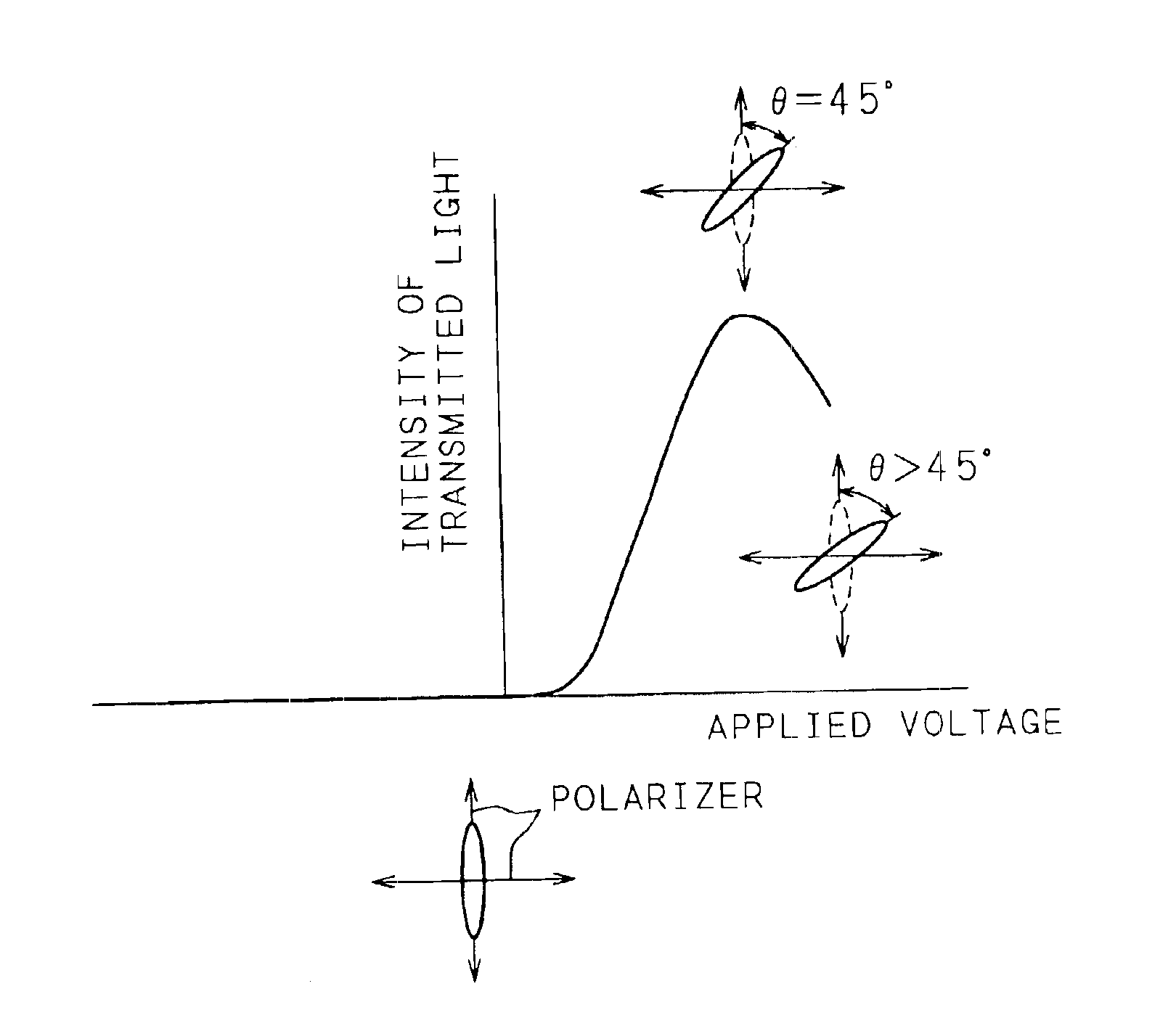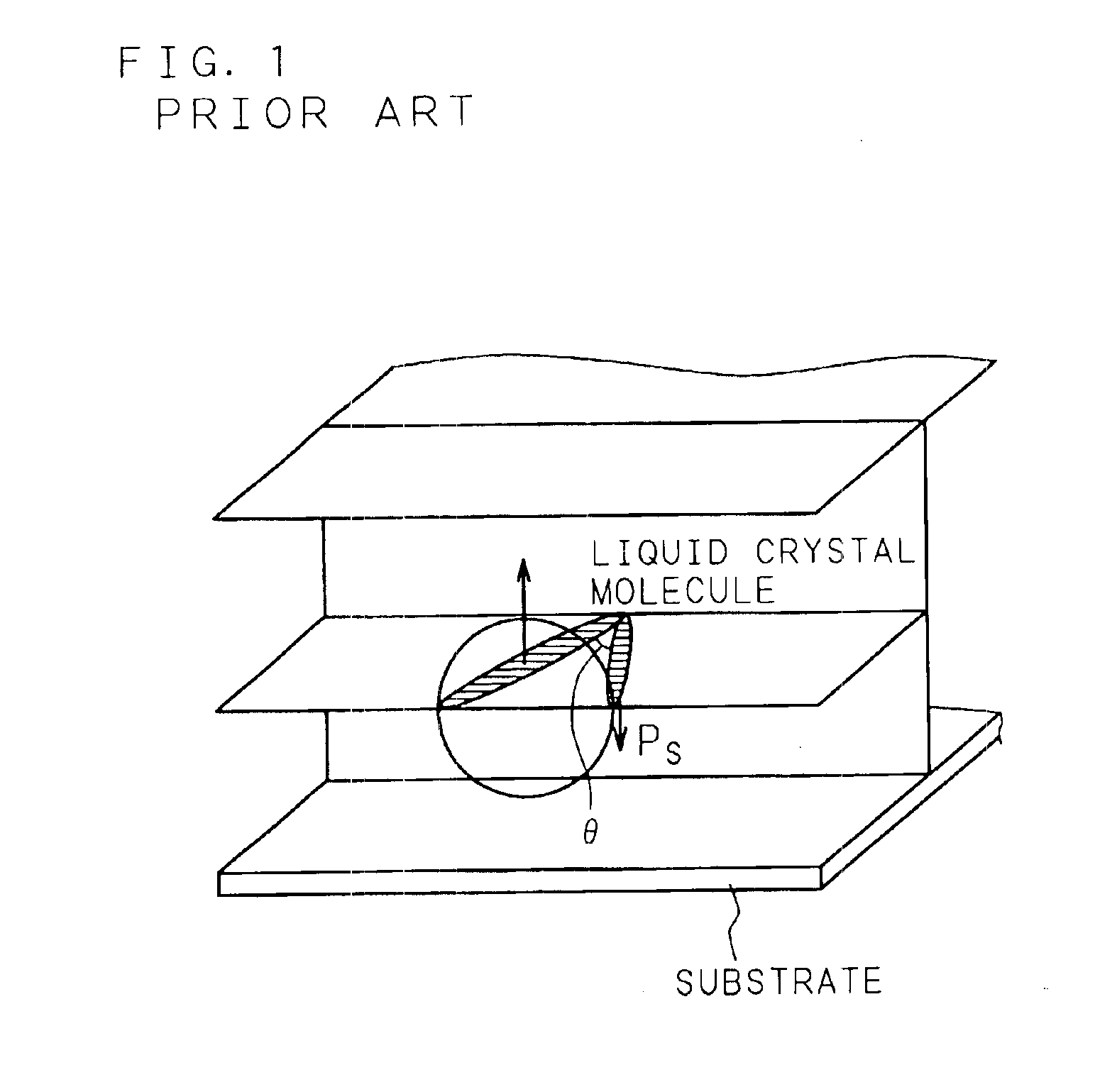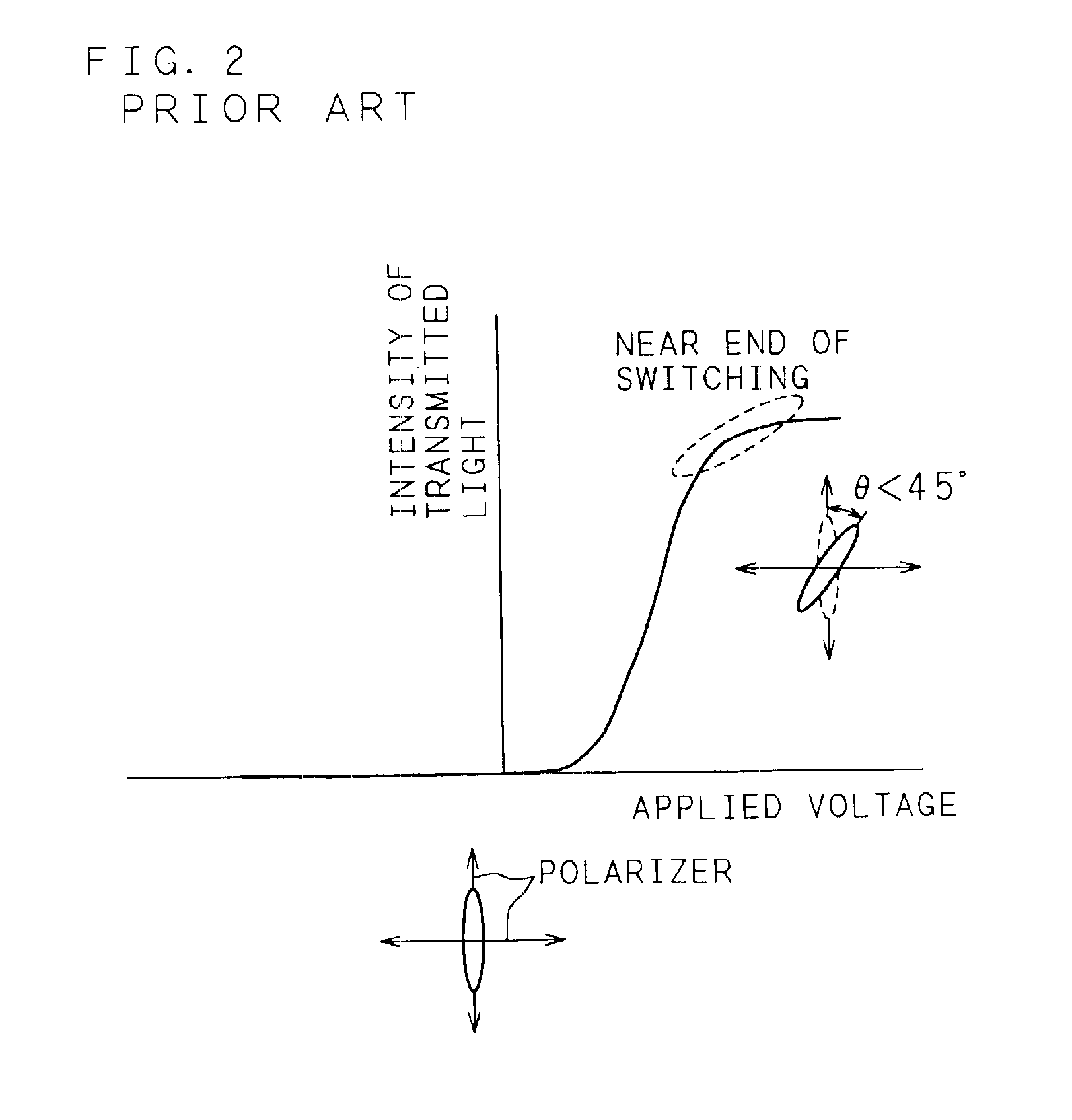Liquid crystal display device having spontaneous polarization
- Summary
- Abstract
- Description
- Claims
- Application Information
AI Technical Summary
Benefits of technology
Problems solved by technology
Method used
Image
Examples
first example
[0067]A liquid crystal panel 21 of the first example as shown in FIGS. 6 and 7 was fabricated as follows. After washing a TFT substrate having pixel electrodes 40 (number of pixels: 640×480, electrode area A: 6×10−5 cm, diagonal: 3.2 inches) and a glass substrate 2 having a common electrode 3, they were coated with polyamide and then baked for one hour at 200° C. so as to form about 200 Å thick polyamide films as alignment films 11 and 12.
[0068]Further, these alignment films 11 and 12 were rubbed with a rayon fabric, and an empty panel was produced by stacking the alignment films 11 and 12 with a gap being maintained therebetween by spacers 14 made of silica having an average particle size of 1.6 μm so that the rubbing directions are anti-parallel. A ferroelectric liquid crystal material based on the specifications of the present invention was sealed in between the alignment films 11 and 12 of this empty panel so as to form a liquid crystal layer 13. This liquid crystal layer 13 obt...
second example
[0073]A liquid crystal panel 21 of the second example as shown in FIGS. 6 and 7 was fabricated as follows. After washing a TFT substrate having pixel electrodes 40 (number of pixels: 640×480, electrode area A: 6×10−5 cm, diagonal: 3.2 inches) and a glass substrate 2 having a common electrode 3, they were coated with polyamide and then baked for one hour at 200° C. so as to form about 200 Å thick polyamide films as alignment films 11 and 12.
[0074]Further, these alignment films 11 and 12 were rubbed with a rayon fabric, and an empty panel was fabricated by stacking the alignment films 11 and 12 with a gap being maintained therebetween by spacers 14 made of silica having an average particle size of 1.6 μm so that the rubbing directions are parallel. A ferroelectric liquid crystal material based on the specifications of the present invention was sealed in between the alignment films 11 and 12 of this empty panel so as to form a liquid crystal layer 13. This liquid crystal layer 13 obtai...
third example
[0080]A liquid crystal panel 21 of the third example as shown in FIGS. 6, 7 and 8 was fabricated as follows. After washing a TFT substrate having pixel electrodes 40 (number of pixels: 640×480, electrode area A: 6×10−5 cm, additional storage capacity: 0.2 pF, diagonal: 3.2 inches) and a glass substrate 2 having a common electrode 3, they were coated with polyamide and then baked for one hour at 200° C. so as to form about 200 Å thick polyamide films as alignment films 11 and 12.
[0081]Further, these alignment films 11 and 12 were rubbed with a rayon fabric, and an empty panel was fabricated by stacking the alignment films 11 and 12 with a gap being maintained therebetween by spacers 14 made of silica having an average particle size of 1.6 μm so that the rubbing directions are anti-parallel. A ferroelectric liquid crystal material based on the specifications of the present invention was sealed in between the alignment films 11 and 12 of this empty panel so as to form a liquid crystal ...
PUM
 Login to View More
Login to View More Abstract
Description
Claims
Application Information
 Login to View More
Login to View More - R&D
- Intellectual Property
- Life Sciences
- Materials
- Tech Scout
- Unparalleled Data Quality
- Higher Quality Content
- 60% Fewer Hallucinations
Browse by: Latest US Patents, China's latest patents, Technical Efficacy Thesaurus, Application Domain, Technology Topic, Popular Technical Reports.
© 2025 PatSnap. All rights reserved.Legal|Privacy policy|Modern Slavery Act Transparency Statement|Sitemap|About US| Contact US: help@patsnap.com



